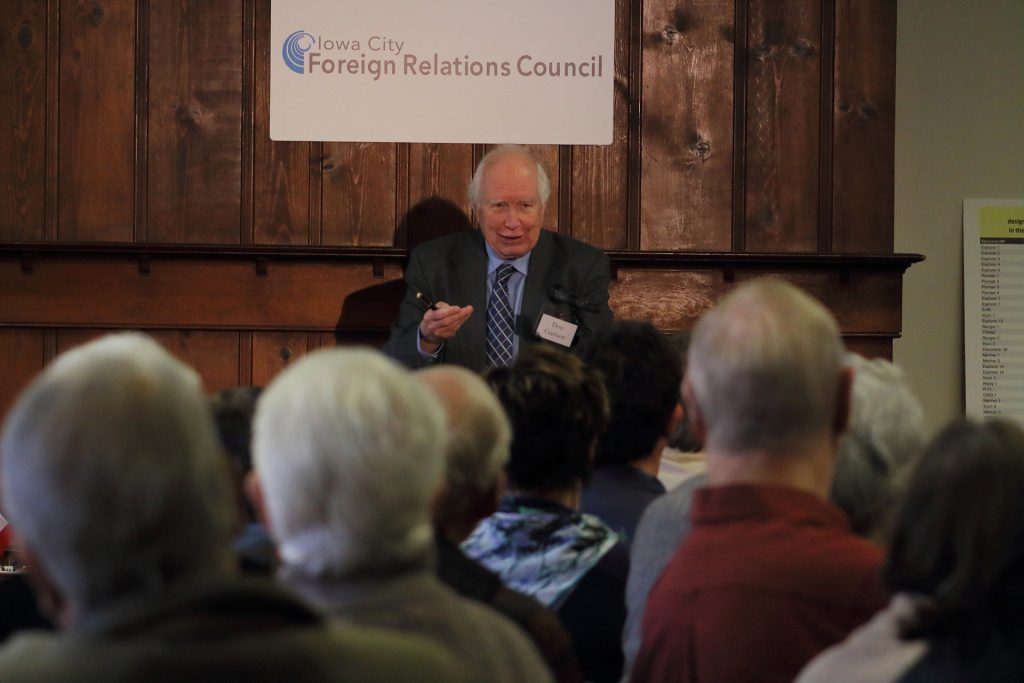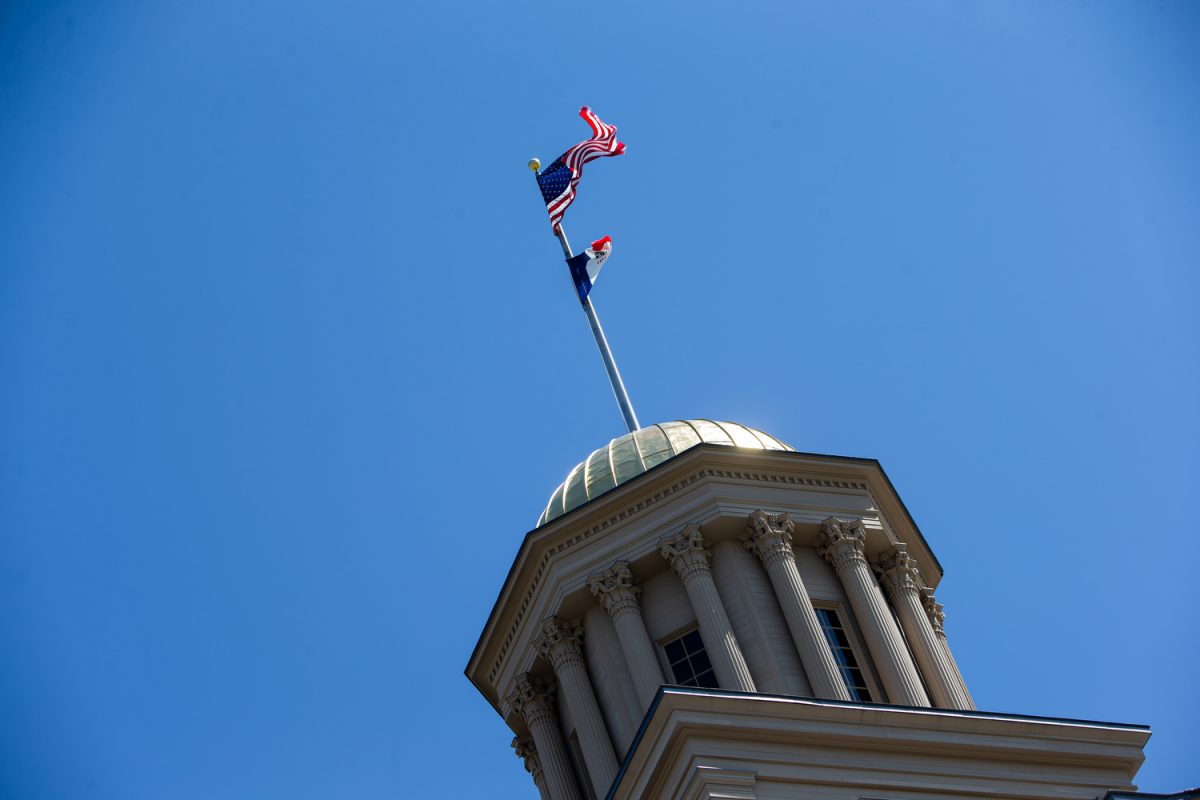Every day, students venture to Van Allen Hall for their lectures and classes — but most don’t know the history of the building.
Sixty years ago, James Van Allen, the eponym of the building full of classrooms and lecture halls, helped to begin the U.S. timeline for space research and put the University of Iowa on the map as one of its main contributors.
On Thursday, the Iowa City Foreign Relations Council hosted a discussion by physics Professor Don Gurnett, who began his work at the UI in 1957.
“Less than a year after I was working on model rockets in high school, I was down at Cape Canaveral working on real rockets,” he said.
A few days after Gurnett arrived at the UI, Sputnik 1 was launched by the Soviet Union, and this was the start of the Space Race. The first successful rocket to be launched by the U.S., Explorer 1, was sent into space on Feb. 1, 1958, with the aid of Van Allen, one of three men given credit for the success of Explorer 1.
Explorer 1 discovered the radiation belts that circle the Earth, and they are properly named the Van Allen Belts. Van Allen’s discoveries were what made Gurnett want to work for Van Allen and subsequently why he was hired.
Gurnett worked on many projects, but his first successful rocket was Explorer 14.
“I was the project engineer of Engine 3,” he said. “At this time I was a junior or senior. Most of the project was run by undergrads.”
Gurnett receives credit for a lot of important space discoveries. He built receivers to capture “whistlers,” sounds made by lightning storms, had a part on Mariner 4, which discovered Mars and Venus had no radiation belts, and worked on what are known as the most successful space launches, Voyager 1 and 2.
“When the Voyager was flying over Jupiter’s moon Io, we heard whistlers,” he said. “That means there is lightning on Jupiter. This was the only other planet than Earth to produce lightning.”
The Voyager missions also found water and ice on one of Jupiter’s other moons, Europa.
“There is a lot of interest going to Europa,” he said. “In theory, life originated at the bottom of the ocean here on Earth, which could happen on Europa.”
One of three new faculty members at the UI hopes to continue its legacy of space research. David Miles said he is interested in auroras, and one of his tools takes “very precise measurements” of Earth’s magnetic fields.
“I came here because UI has been in space research since space research has existed,” Miles said. “I like building hardware and getting it into space, and the University of Iowa is one of the few places you can do that.”
Miles has recently returned from Norway with two undergrads after visiting a rocket field school, and he said the experience was very educational.
Ed Zastrow, the director of the Iowa City Foreign Relations Council, said he picked Gurnett as a speaker because of his amazing accomplishments.
“He’s a legend,” Zastrow said. “He has nearly 60 years of experience with the United States space program through the university’s department of physics.”










